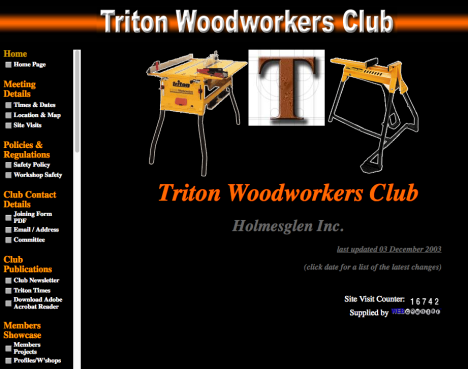It started off modestly. A few posts here, a few jokes there, some news, some videos, and slowly it grew.
From a walk to a run to a gallop, then as competing pressures came to bear it has dropped back to a quieter place. But still, we got there.
Stu’s Shed is officially 10 years old today.
Some Stats
Because I like stats.
Total views: 3,207,017
Total unique visitors: 691,972
Total posts: 3042

And as I like to quote, those views do not count other platforms, so the rough estimate would be around 5 million views of the content.
Videos: Well, I’ve completely lost track of this number, having changed hosting platforms and a bunch of other issues for tracking. There are over 200 videos, and people have heard me say “G’day, welcome to Stu’s Shed” over a million times. One video on YouTube alone has been seen 256,296 times.
Humble Beginnings
Using the Wayback Machine, I found a very early post to see what the site looked like back then. Even I had forgotten! Not sure if I recognise the person in the heading either any more!

Back then I was still running woodworking courses on the weekend at Holmesglen Tafe, and going to the Triton Woodworkers Club that I had previously been the President of. The website I built for them is long gone now, but the Wayback Machine still has snapshots on file.

Anyone remember back that far?
Stu’s Shed went through a number of changes over the years, refinements rather than drastic changes.

The Physical Shed
The shed itself has also undergone constant change over the years too. It started out as a 3m x 3m, that I crammed in a Triton Workcentre, router table, and a lathe. Don’t even have a photo from inside back that far.

The next iteration was the addition of a 6×3 shed, which was a massive improvement.
That lasted a while until a gusty day saw half of it deposited over the neighbour’s fence

It was repaired and lasted a few more years, until finally an expansion was again required.

This photo is during the build, and the shed grew to become an 8m x 4m. Again, the luxury of so much space. At the time! It took a few more years, but I outgrew that one too.

It was then that we decided to move house, so a brand new shed was on the cards. It took 12 months of operating in the garage of the new house, but finally version 4 of Stu’s Shed was built.


Inside, it keeps going through changes, but that is still how it looks in general. The door fell off the other day (hinges gave up), and the floor inside is thick with sawdust, but it is still working. I still haven’t finished unpacking from the last move!

I don’t even remember when the inside of the shed looked this clean, and lacking clutter! Sigh.
So I guess that it is for this retrospective. 10 years of blogging on Stu’s Shed.
Where to from here, I have no idea. But if you hang around and check in occasionally, no doubt you’ll get to hear and see when I do know! In the meantime, I’ll still post when I can, and when there is something to discuss. Things sure have changed in the blogosphere over the last 10 years too. There were only 3 of us running woodworking blogs back then. Now there are 1000s. And in my small way, I might have played a part in that too.
Thanks for the last 10 years of sharing this adventure. And let’s see what there is to come next!
Filed under: Uncategorized | 12 Comments »































